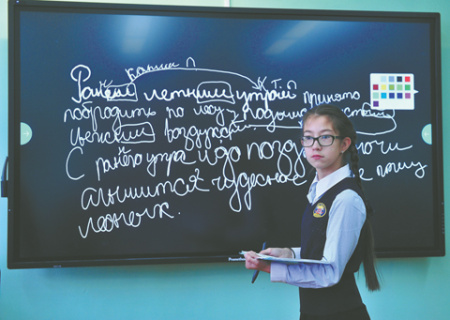
I recently published an article in which I tried to summarize the psychotypes of teachers (“Such different teachers”, see “NG” dated 03/20/25). But the students are also very different. Not every schoolteacher knows all his students well due to the fact that the work is carried out in classrooms where not every student is ready to open up. But the tutor, when working individually with a student, simply has to understand him. Or it’s not a tutor.
When the covid pandemic started in 2019, I was still working at school. I remember well how difficult it was for us to switch to online learning. But more than five years have passed since then. And online learning has become a massive field of additional education. In online schools and online courses with online tutors, which now include myself. Considerable experience of such work has allowed us to identify the types of students with whom it is possible and necessary to work in different ways. I think that it is useful for both the tutor and the student’s family to determine the type of their student.
But in order. They come to tutors when there are any problems. One of the important ones is the lag in the program. And it doesn’t really matter which program it is (regular, specialized, or special). It is important that there are gaps that need to be filled. And the student is still weak for his program. I have identified two types of “weaklings”.
“A slacker weakling.” Such a student does not pull and does not seek to pull. He is not interested in the subject. Evaluation is important to him. And not the maximum. A three will do just fine. If you do his homework for him and prepare him for the exams at a minimum, then he will be happy. But at the same time, he will gladly disrupt several classes, since his motivation is close to zero. I had such a student. After the second disruption of the lesson for no good reason, I excluded him from my list, because every disruption is a lost benefit for the tutor.
“A hardworking weakling.” This is a weak student who wants to become strong. The motivation here is one hundred percent. Such a student is ready to study during the holidays, and even in the summer. I admit that this is my favorite category of students. When I see that the “ugly duckling” is gradually turning into a “beautiful swan” thanks, among other things, to my efforts, it can not but rejoice. And everyone is happy: me, the student, and his parents. Money is a thing, but no one has canceled the moral satisfaction of work.
Let’s move on to strong students. Here I would identify three categories.
“Pragmatists”. These are students who clearly see the ultimate goal. For example, you can take the OGE for 5 points or the Unified State Exam for 80 +. Such students are not interested in anything beyond this goal. Moreover, if the goal is achieved, such a student often says goodbye to the tutor without words of gratitude. As a matter of fact, the tutor “brought” the student to the required score and is no longer needed. I won’t say it’s pleasant, but it’s quite bearable. A job is a job.
“Excellent students.” I did not accidentally put the feminine gender, since girls usually belong to this category. Smooth handwriting, good memory and a complete lack of approaches to solving tasks that have not yet been sorted out. Even the C-students are trying to find a solution, but the excellent students do not want to. They need to explain everything. In detail and point by point. Otherwise they don’t understand.
For example, there is an economic problem in the Unified State Exam in mathematics. Tasks for loans and deposits. The tasks are easier for deposits. And in general, the solution methods are the same, since a deposit is to put first and then take; a loan is to take first and then give. But with the ability to solve loan assignments, the “excellent student” most often looks at the contribution assignment like a sheep at a new gate. Because “we didn’t go through that, we weren’t asked that.”
“Olympiadniki”. This is a category of strong students who want to actively develop. There are two goals combined here: the desire to raise your level of thinking and win in optional competitions, which include the Olympics. Such students are quite rare, but they are very interesting to work with. Because they want to know, not give up.
To summarize. I have focused only on the objective features of different types of students. Of course, there are also differences in other parameters. For example, there are nimble ones whose answer is ahead of calculations (very harmful in official exams), and slow ones who can count the simplest example for a few minutes. There are emotional and indifferent ones, there are open and closed ones. But it’s all individual.
